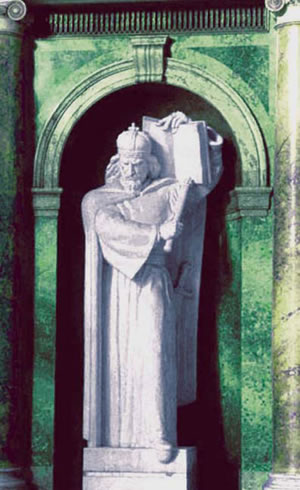
Dragutin Filipovic, "Czar Dusan", 1937
According to the design for the building of the House of National Representation, including the interior design, it was envisaged that sculptures should be the most important decorative elements, which would be the expression of artistic values and visual manifestation of national, spiritual and political identity. Already in the twenties of the last century, according to the idea of the architect Ilkic, the sculptures should have been placed at both entrances and along the upper edge of the lateral wings of the buildings. With their symbolic character, the sculptures were supposed to refer to the function of the institution and its importance. However, this concept was not implemented, but the decision was made to place the selected cast models, created in the period from 1925 to 1926, in the interior of the building. Nine works have been preserved: Defence and Miner by D. Arambasic, Science by P. Palavicini, Traffic by L. Dolinar, Handicraft by I. Kerdic, Trade by Z. Lukic, Politician by I. Zajec, Gardener by I. Napotnik and the Constructor, probably by D. Hotko. These versatile sculptures reflect the main artistic streams in sculpture of that period a great deal.
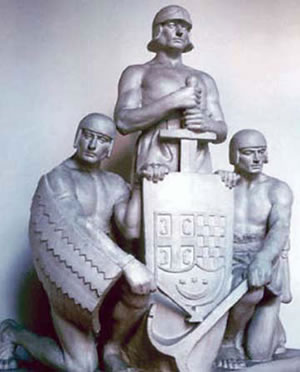
Dragomir Arambasic, "Defense", 1925
Upon the construction of the building, towards the end of the thirties, the sculptures were placed in niches designed for that purpose inside the building and they present more harmonized entirety. In the vestibule, at the very entrance, there are four monumental sculptures in the marble of Prilep, of firm, stable forms and slightly stylized, reduced surfaces, which present the individuals who symbolize the historical development of all three constitutive peoples and the founder of the royal dynasty. Those are Tsar Dusan by D. Filipovic, King Tomislav by V. Radaus, Prince Kocelj by T. Kos and Karadjordje by F. Krsinic. The sculptures in the central hall, according to the planned concept, present the economic activities and are expressed by female figures with attributes pertaining to certain economic branches. The figures Handicraft and Sailing, the works of P. Palavicini and Agriculture and Industry, by F. Gorse are made of marble. The related works are the personifications of Justice and Education, two works by F. Krsinic, made of bronze. The mentioned works were created according to the models that won the first awards at the competition in which almost all known Yugoslav sculptors from that time took part in.
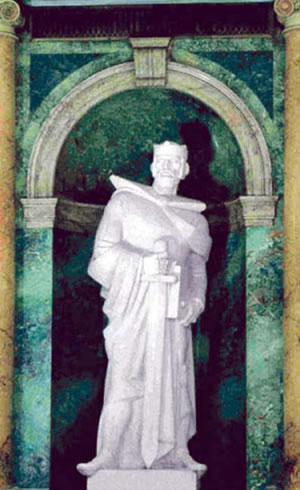
Vanja Radaus, "King Tomislav", 1937
Upon the construction of the building, towards the end of the thirties, the sculptures were placed in niches designed for that purpose inside the building and they present more harmonized entirety. In the vestibule, at the very entrance, there are four monumental sculptures in the marble of Prilep, of firm, stable forms and slightly stylized, reduced surfaces, which present the individuals who symbolize the historical development of all three constitutive peoples and the founder of the royal dynasty.
Those are Tsar Dusan by D. Filipovic, King Tomislav by V. Radaus, Prince Kocelj by T. Kos and Karadjordje by F. Krsinic. The sculptures in the central hall, according to the planned concept, present the economic activities and are expressed by female figures with attributes pertaining to certain economic branches.
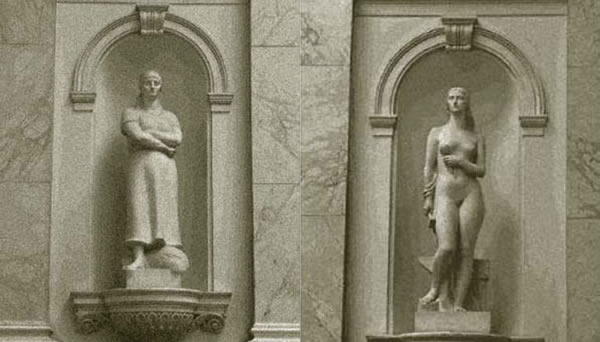
France Gorse, "Agriculture", 1937 and Petar Palavicini, "Handicraft", 1937
The figures Handicraft and Sailing, the works of P. Palavicini and Agriculture and Industry, by F. Gorse are made of marble. The related works are the personifications of Justice and Education, two works by F. Krsinic, made of bronze. The mentioned works were created according to the models that won the first awards at the competition in which almost all known Yugoslav sculptors from that time took part in.
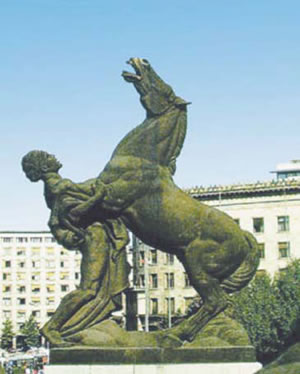
Toma Rosandic, "Black horses are playing", 1937-1938
Unlike them, the two dynamic compositions entitled Playful Black Horses, placed in front of the building in 1938, were ordered directly from Toma Rosandic, whose creative and educational work left a significant mark on both Serbian and Yugoslav plastic art.
The portraits, which testify to the lives of the individuals, but also to the historical periods they marked with their work, have an important place in the esthetic and political process of the artistic formation of the parliamentary edifice. The first in this collection was the portrait of King Petar I, which was reproduced in several pieces for all important state institutions in 1920.
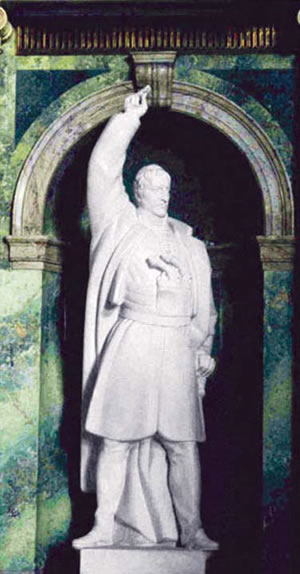
Frano Krsinic, "Karadjordje", 1938
As part of the interior design, the busts of King Aleksandar, Nikola Pasic and Stjepan Radic were ordered from R. Stijovic, T. Rosandic and S. Stojanovic, and then I. Despic made a portrait of the King Petar II in 1937.
During the post-war period, as of 1947, the busts of Josic Broz Tito were created by A. Augustincic and B. Kalin, as well as the busts of the Chairmen of the Federal Parliament Mosa Pijade, Dr. Ivan Ribar, Milentije Popovic, Edvard Kardelj by A. Augustincic, B. Kalin, N. Jankovic and Z. Kalin.
The sculptures in the building of the National Assembly are the works of the most imminent authors from the territory of the former Yugoslavia. With regards to their artistic value, they are among the highest achievements in Yugoslav sculpture, especially sculpture in the period between the two World Wars. Regarding the designing concept, they make a harmonious and thoughtful entirety which reflects the historical, spiritual and material development of the state.
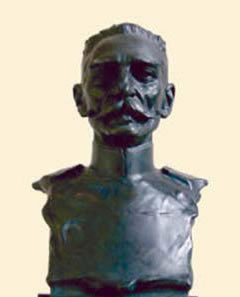
Rudolf Valdec, "King Petar I", 1904.
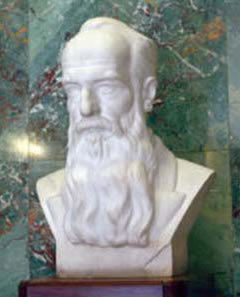
Toma Rosandic, "Nikola Pasic", 1937
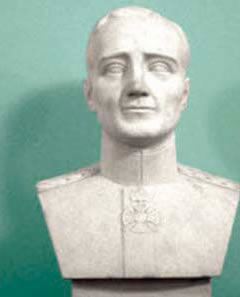
Risto Stijovic, "King Aleksandar", 1937
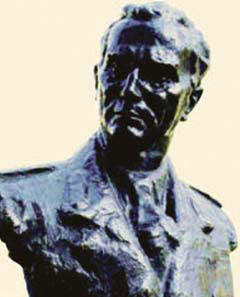
Antun Augustincic, "Josip Broz Tito", 1947













